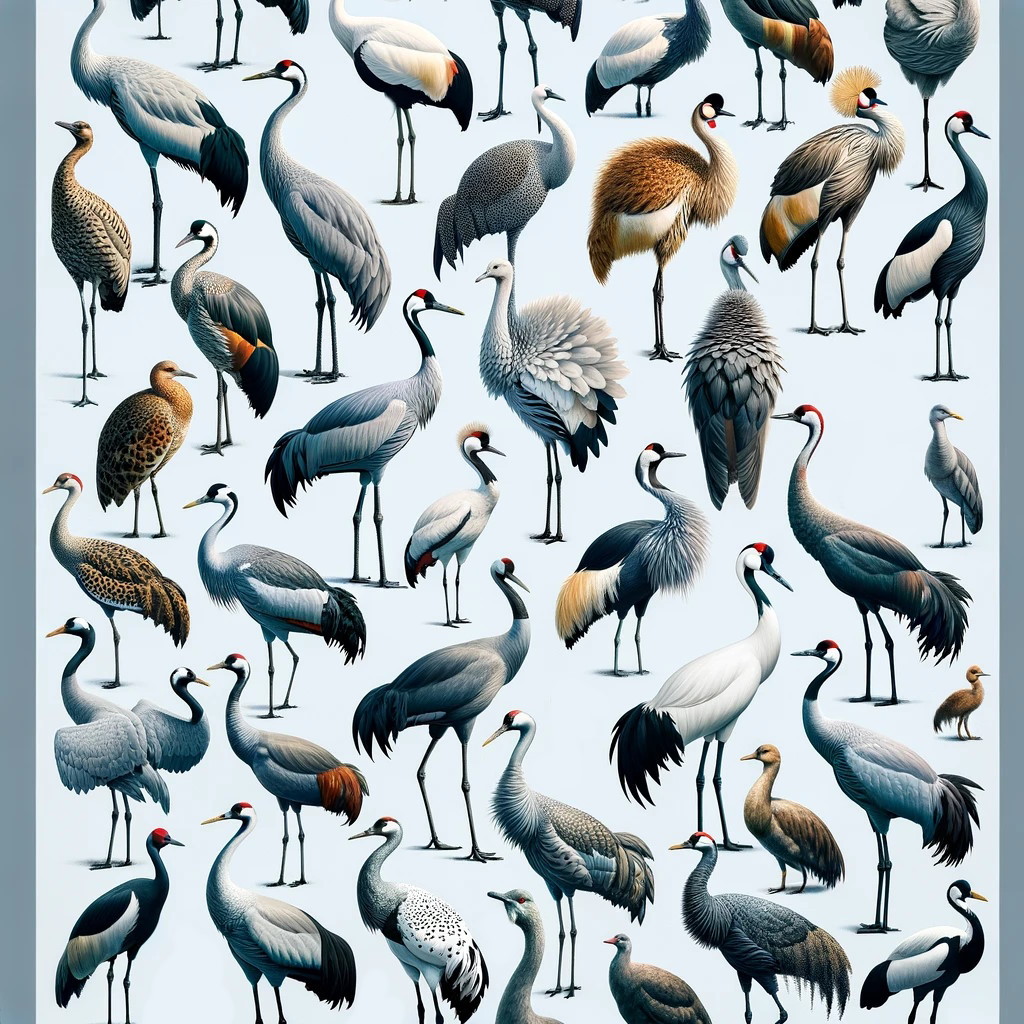
Nepal, a captivating country tucked between India and China, boasts incredible biodiversity and awe-inspiring landscapes. A lesser-known yet fascinating aspect of Nepal's wildlife is the Gruidae bird family. These remarkable birds are vital to the country's ecosystem, providing numerous advantages to their environments. In this article, we'll dive into the technical details of the Gruidae bird family and appreciate these impressive creatures in their natural Nepalese surroundings.
An Introduction to the Gruidae Bird Family
The Gruidae family consists of large-bodied birds commonly known as cranes. With 15 species within this group, some can be found residing and migrating through Nepal. Recognized by their extended legs, elegant necks, and sophisticated plumage, these birds exhibit captivating behaviors and are revered in various cultures for their symbolic significance.
Prominent Species Found in Nepal
Two crane species that regularly visit or reside in Nepal are the vulnerable Demoiselle Crane (Anthropoides virgo) and the endangered Sarus Crane (Grus antigone). At specific times of the year, these majestic birds can be seen in distinct regions across Nepal.
Demoiselle Crane
This crane is easily identified by its graceful appearance, blue-grey coloration, and slender physique. Primarily inhabiting central Asia's grasslands, these cranes migrate to Rajasthan (India) near Pakistan during winter. A small population of Demoiselle Cranes has been documented migrating through Maharashtra (India) into the Terai region of Nepal.
Sarus Crane
The tallest flying bird globally, standing over five feet tall, is recognized by its striking red head and white nape collar that contrasts with its dark grey plumage. Sarus Cranes find their home year-round in Nepal's Terai region wetlands, marshes, and flooded agricultural areas. Conservation initiatives are ongoing to safeguard these endangered cranes and their habitats.
Technical Insights: Exploring Crane Behavior and Biology
Members of the Gruidae family, these cranes exhibit several distinct behaviors and adaptations that enable them to prosper in their environments.
Migratory Patterns
Some cranes have long migration routes, while others opt to remain within a particular area. Comprehending their migratory patterns assists researchers in pinpointing conservation focus areas.
Social Structure
Cranes typically reside in pairs or small groups for their entire lives. Their strong relationships boost their survival skills and are crucial to consider when devising conservation approaches.
Communication
Gruidae birds employ a range of vocalizations and body movements to interact with each other. A deeper understanding of crane communication can contribute to more effective conservation methods.
Breeding and Nesting
Providing secure nesting grounds is essential for the ongoing survival of crane species, especially those facing dwindling populations and habitat loss.
Conclusion
The Gruidae bird family, particularly the Demoiselle Crane and Sarus Crane, hold a notable position in Nepal's abundant biodiversity. As we uncover more about these majestic creatures' technical details, it's vital that we work toward preserving their habitats so future generations can continue to marvel at their presence amidst Nepal's stunning landscapes.
